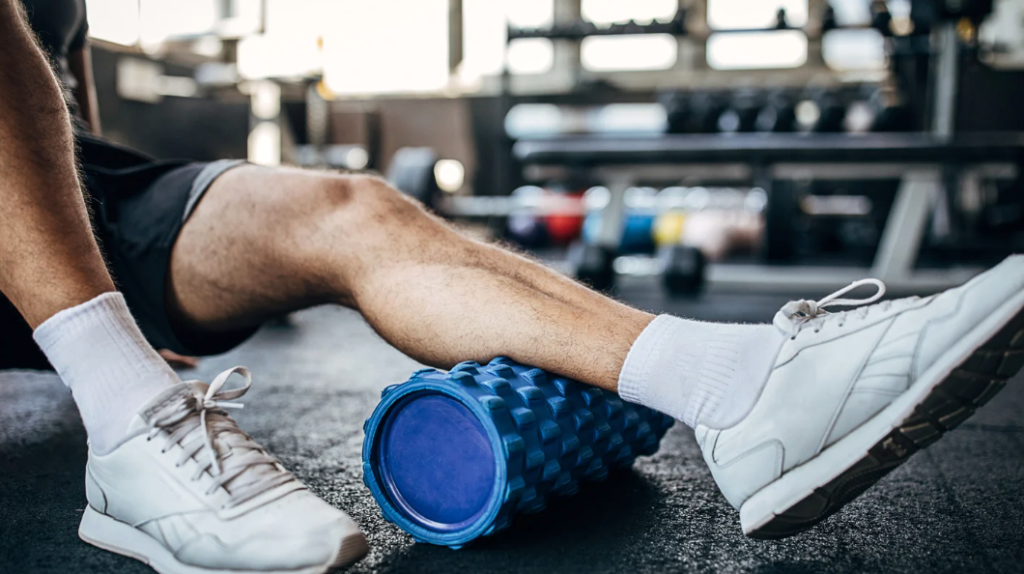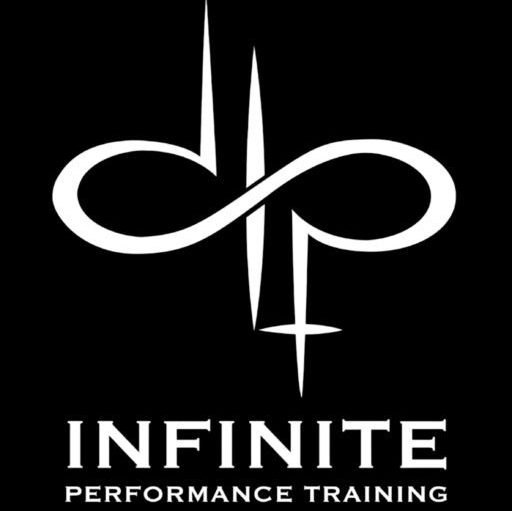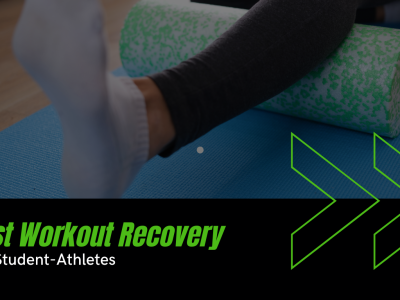Are you looking for post-workout recovery tips for student athletes? Whether you are an athlete or just a regular gym-goer, it is essential to prioritize your post-workout recovery!
At Infinite Performance Training, we talk a lot about grind, but here’s the truth: Performance isn’t just built in the weight room. It’s built in recovery and what you do after the workout! What you do after training determines how hard you can go next time.
I’m CJ, and around here at Infinite, we teach our athletes that recovery isn’t a luxury — it’s part of the program. Smart recovery repairs muscle, resets hormones, and keeps you from burning out halfway through the season. The same goes for our adults working toward weight-loss or strength goals—if your body never recharges, it never performs at its best.
With that in mind, we’ve recently expanded our offerings beyond the gym. Our new meal prep program was designed to help athletes and members refuel properly after training. Because the right food at the right time makes all the difference in how you recover, perform, and feel.
Let’s dive into the strategies we coach every day inside Infinite to help you turn soreness into strength and fatigue into progress.
What Are the Most Effective Muscle Recovery Techniques for Athletes?
Recovery is where the gains are built. After training, muscle protein synthesis rises, glycogen refills, and the nervous system resets. Your job is to support those processes without adding more stress.
Here is a clear, athlete-tested toolkit you can put to work today:
1. Sleep:
The key driver of tissue repair, immune health, and overall recovery is SLEEP. Consistent, high-quality sleep not only rebuilds muscles but also sharpens focus, coordination, and reaction time for your next session.
Aim for 7 to 9 hours. Growth hormone release peaks during slow-wave sleep and supports tissue repair.
2. Protein and carbs:
Recovery starts in the kitchen. Within 30–90 minutes post-training, refuel with a smart combo of protein (about 0.3 g/kg) and carbohydrates (1.0–1.2 g/kg). This window helps kickstart muscle protein synthesis and restores glycogen stores, ensuring your energy and strength return quickly. Think simple: grilled chicken with rice, chocolate milk, or a smoothie with fruit and whey protein.
3. Hydration:
Replace sweat losses with water and electrolytes. Even mild dehydration raises heart rate and delays recovery runs. Even a 1–2% drop in hydration can raise your heart rate, decrease power output, and delay recovery. A good rule: drink to thirst and add a pinch of salt or an electrolyte mix when training intensely.
4. Foam rolling or massage:
Gentle pressure improves range of motion and reduces next-day soreness without hurting strength. As a post-workout recovery strategy, foam rolling helps relieve tight fascia, improve range of motion, and reduce delayed-onset muscle soreness. Keep sessions short and controlled; rolling too hard or too long can do more harm than good. Focus on recovery, not punishment.
5. Active recovery:
Movement is medicine, and keeping your blood circulating is key. Instead of collapsing on the couch, use light activities like walking, biking, swimming, or dynamic stretching to increase blood flow and flush out metabolic waste. Just 15–30 minutes of low-intensity movement the day after training can significantly improve how your body feels and performs the rest of the week.
6. Use Cold & Heat Wisely Recovery:
Use cold and heat, but remember timing matters. Cold therapy (such as ice baths or cold plunges) can help reduce inflammation and limit swelling after hard contact days. Heat therapy (like hot showers, saunas, or heating pads) helps loosen stiff joints and relax muscles on lighter days. Know your body, and choose the method that fits your training load.
7. Strengthened basics:
Commit to proper warm-ups, mobility training, and light eccentric work to prevent nagging soreness or overuse injuries. A steady, smart workload and consistent attention to form will keep you healthy, durable, and performing at your best all season long. Mobility work, light eccentrics, and sensible training loads prevent repeat soreness.
GET IN TOUCH
Schedule a Training Session
How Does Foam Rolling Help With Muscle Recovery?
Foam rolling applies low-to-moderate pressure across muscles and fascia. This pressure triggers receptors that down-regulate excessive muscle tone, improve local circulation, and reduce the perception of soreness 24 to 72 hours after hard sessions. Studies also show a short rolling session can increase range of motion without the temporary strength loss often seen after long static stretching.
Try this simple protocol:
- Choose large movers first: quads, calves, glutes, lats.
- Roll each area for 60 to 120 seconds, one to three passes.
- Use slow, controlled breaths at a pain level of about 5 to 7 out of 10.
- Pause on tender spots for 20 to 30 seconds, then continue rolling.
- Apply before training for mobility and after training for soreness relief.
What Are the Benefits of Massage Therapy for Post-Workout Recovery?
Massage reduces perceived soreness and improves comfort, which lets you resume quality training sooner. Light to moderate strokes increase skin and muscle blood flow, while the relaxing effect boosts parasympathetic activity, lowering heart rate and tension. Research also shows small favorable shifts in muscle damage markers after massage, such as creatine kinase and certain inflammatory cytokines.
Use massage strategically:
- 10 to 30 minutes within two hours after key sessions, or on rest days.
- Focus on volume-heavy muscle groups first.
- Choose lighter pressure after intense lifts or games.
- Avoid deep work on fresh strains, acute swelling, or unexplained pain.
How Can Active Recovery Workouts Enhance Muscle Repair?

Active recovery keeps you moving at an easy effort so circulation stays high and waste products clear faster. Compared with complete rest, low-intensity work accelerates lactate removal, maintains joint motion, and supports collagen remodeling without adding fatigue.
Keep it easy and short:
- 10 to 20 minutes at a conversational pace.
- Cycle, incline walk, easy swim, or mobility circuits.
- Keep intensity around 30 to 60 percent of your usual effort.
- Finish with light mobility for hips, ankles, and thoracic spine.
- If your breathing is labored, you are going too hard.
When Should Athletes Use Rest Versus Active Recovery?
Both rest and active recovery have a place in an athlete’s training plan, but knowing when to use each can make the difference between steady progress and overtraining. The body repairs muscle fibers, restores glycogen, and recalibrates the nervous system after every workout, but it needs the right balance of total rest and light movement to do so efficiently.
Here’s how they compare and when each works best:
| Recovery Type | When to Use It | What It Does | Scientific Benefit | Best For |
|---|---|---|---|---|
| Rest (Complete Rest) | After intense competitions, injuries, or high-load training weeks | Allows full recovery of muscles, joints, and the central nervous system | Rest increases parasympathetic activity, helping restore heart rate variability and reduce cortisol levels | Post-event recovery, illness, or fatigue from overtraining |
| Active Recovery (Light Movement) | The day after moderate or heavy training sessions | Promotes circulation, clears lactate, and keeps mobility | Studies show low-intensity cycling or swimming at 30–60% effort removes lactate faster than full rest | Between workouts, during deload weeks, or for athletes training daily |
| Combination Approach | Alternating rest and light activity days | Balances recovery speed and readiness | Combining passive and active recovery improves overall training consistency and muscle performance | Long training cycles or mixed-sport athletes (e.g., track, soccer, football) |
Pro Tip: If your muscles feel sore but not painful, choose light activity, think mobility work, an easy jog, or yoga. If soreness turns sharp, take a full rest day. Your body tells you what it needs, and listening saves both muscle and motivation.
Best Post-Workout Nutrition to Support Muscle Repair

After training, your body enters what scientists call the “anabolic window,” a short period when muscle cells are extra responsive to nutrients. That’s your chance to refuel, rebuild, and reduce soreness before tomorrow’s grind.
A balanced recovery plate should include:
- Protein to rebuild damaged fibers and trigger muscle repair.
- Carbohydrates to restock glycogen—the body’s primary fuel tank.
- Electrolytes and fluids to replace what you lost in sweat.
- Micronutrients like magnesium, potassium, and zinc support enzyme function and reduce cramps.
How Much Protein Should Athletes Consume After Workouts?
Your muscles are like construction crews they can’t rebuild without materials. Protein delivers those materials. Research from the Journal of the International Society of Sports Nutrition suggests 20–40 grams of high-quality protein after training maximizes muscle protein synthesis.
What matters most isn’t chugging the biggest shake, it’s timing and type:
- Timing: Within 30 to 60 minutes after training, when muscle uptake is highest.
- Type: Complete proteins (like whey, eggs, or lean meat) contain all nine essential amino acids.
- Tip: Pairing protein with carbs improves absorption by increasing insulin response, helping amino acids reach muscles faster.
Treat your post-workout protein like fuel for a construction site, not frosting on a cupcake.
Why Is Carbohydrate Replenishment Important for Recovery?
When you train, your muscles burn stored glycogen for energy. If you don’t refill it, you’re basically starting your next session with an empty tank. Studies show athletes who consume 1.0–1.2 grams of carbs per kilogram of body weight within two hours post-exercise restore glycogen stores faster.
What Are the Optimal Hydration Strategies Post-Exercise?
For every pound of sweat lost, athletes need about 16–24 ounces of fluid to rehydrate. Skip it, and your body won’t deliver oxygen or nutrients efficiently.
Here’s how to hydrate like a pro:
- Weigh yourself before and after training to estimate sweat loss.
- Use electrolyte-rich fluids—sodium, potassium, and magnesium help water absorption.
- Aim for steady sipping, not chugging, to avoid bloating.
- Color test: Pale yellow urine means hydrated; dark means grab that bottle now.
Most Beneficial Recovery Supplements for Athletes

Should a young student athlete take protein, or what about creatine? What is the best brand?
These are questions we get all the time at Infinite Performance Training in Gainesville, VA, and truthfully, there is no simple answer. However, high-quality supplements DO matter and can make a big difference!
Let’s dive into the top 3 supplements to consider with the best approaches:
How Do Protein Powders and Amino Acids Aid Muscle Repair?
When your workout ends, your muscles look like a construction zone, with tiny microtears everywhere. Protein powder and amino acids supply the raw materials your body uses to patch those fibers and make them stronger.
Here’s what happens behind the scenes:
- Protein powder: Provides complete amino acid profiles that your body can digest and absorb quickly, which is why whey protein remains a top pick.
- Branched-chain amino acids (BCAAs): Leucine, isoleucine, and valine act like the “on switch” for muscle repair, stimulating protein synthesis and reducing soreness.
- Essential amino acids (EAAs): These cover the gaps your body can’t make on its own, ensuring muscle growth doesn’t stall.
What Role Does Creatine Play in Post-Workout Recovery?
After exercise, your body’s stores of adenosine triphosphate (ATP), its energy currency, run low. Creatine helps replenish ATP quickly, allowing muscles to recover their energy reserves sooner.
Beyond energy, creatine pulls water into muscle cells, creating a hydrated environment that supports repair and reduces breakdown. Athletes who take 3 to 5 grams daily tend to see less fatigue and faster strength recovery between sessions.
In layman’s terms, creatine is like your muscle’s backup generator—it keeps the lights on when energy runs low.
Are Anti-Inflammatory Supplements Effective for Recovery?
Inflammation is part of healing, but too much slows the rebuild. That’s where anti-inflammatory nutrients come in handy. Omega-3 fatty acids, curcumin (from turmeric), and tart cherry extract are natural options that help calm soreness without blunting the body’s natural repair process.
Here’s how they help:
- Omega-3s reduce muscle tenderness by improving blood flow and cell membrane repair.
- Curcumin blocks certain enzymes tied to pain and stiffness.
- Tart cherry extract helps clear muscle waste products that cause soreness after long training days.
Used consistently, these supplements keep inflammation at a level that promotes growth instead of pain. It’s your body’s “quality control,” making sure recovery happens smoothly without shutting down the repair crew.
Verdict: Train Hard, Recover Harder
Your body can only perform as well as you let it recover. Sleep, nutrition, hydration, and active recovery aren’t optional — they’re the foundation of long-term growth. Whether you’re a student athlete grinding toward the next level or an adult chasing strength and better energy, recovery is where your real progress happens.
At Infinite Performance Training, we’re here to help you recover smarter. From customized recovery plans to fresh, performance-based meal prep options built specifically for athletes, we’re giving you everything you need to bounce back faster and stay in the game longer.
If you’re ready to fuel your recovery the same way you train — with purpose and precision — reach out today. Let’s build your plan, prep your meals, and keep your performance climbing week after week.


 Maddie | Multi-Sport Athlete
Maddie | Multi-Sport Athlete
Leave a Reply